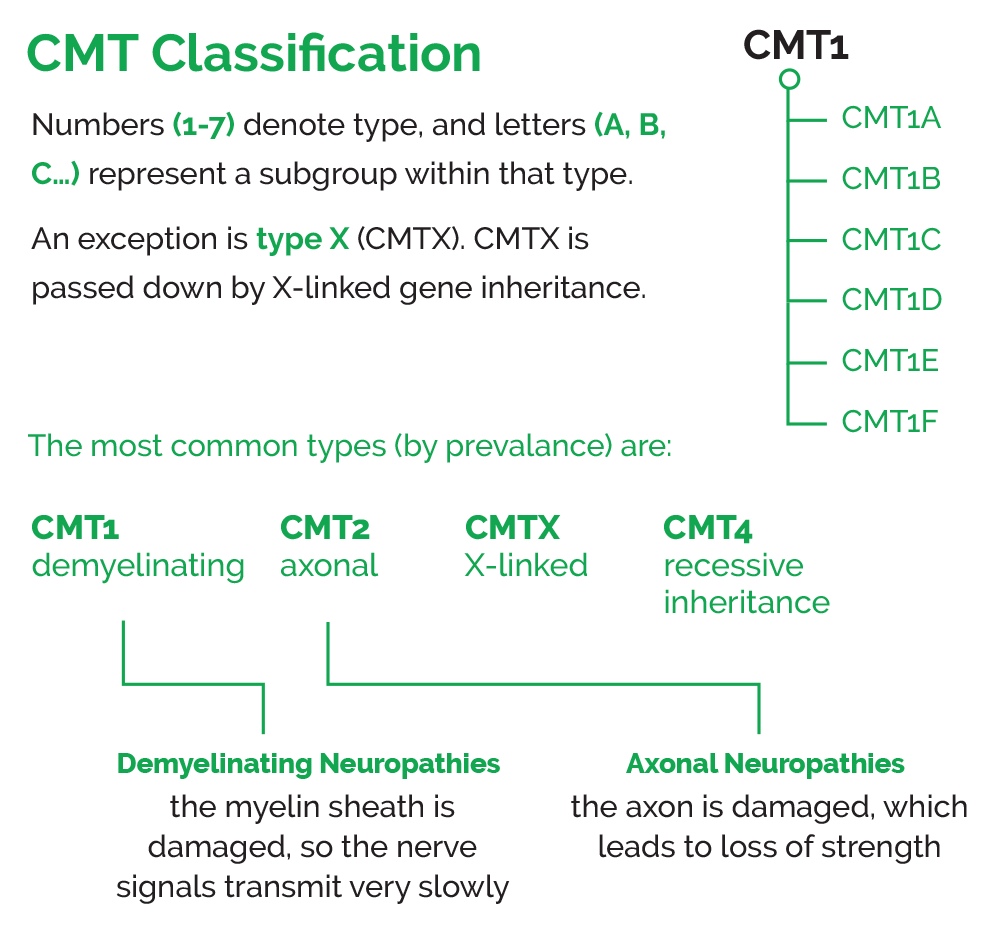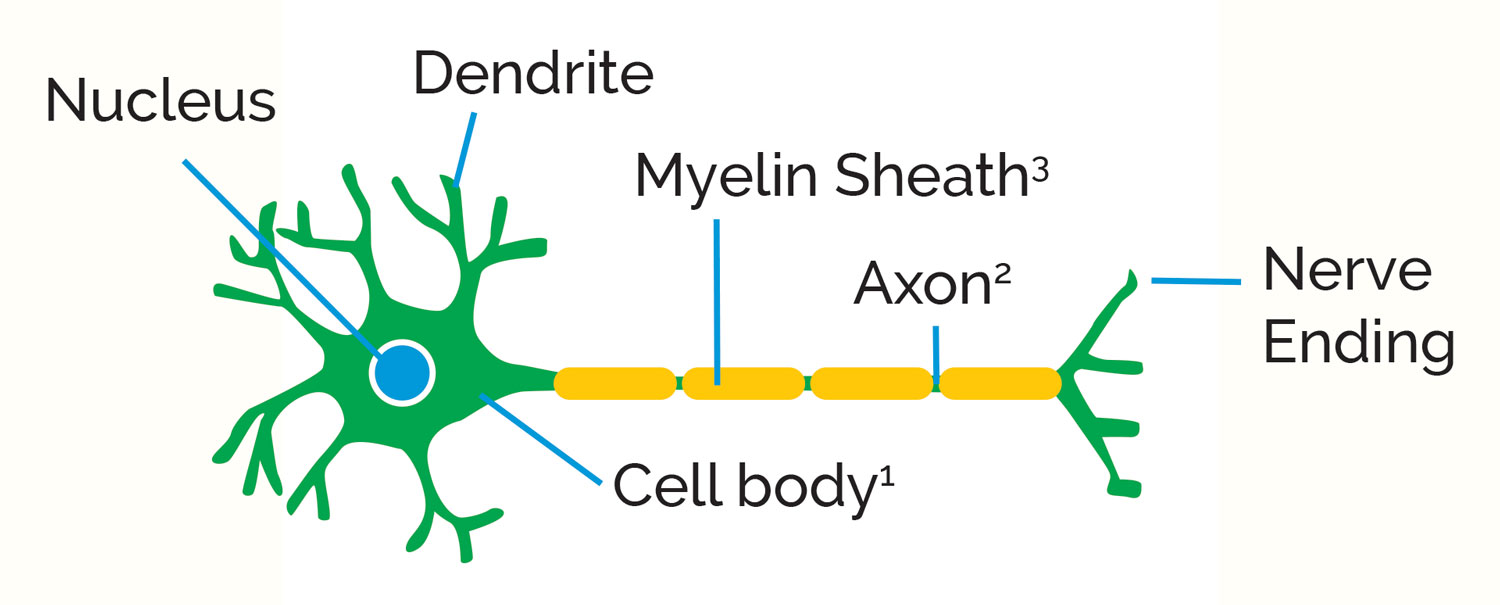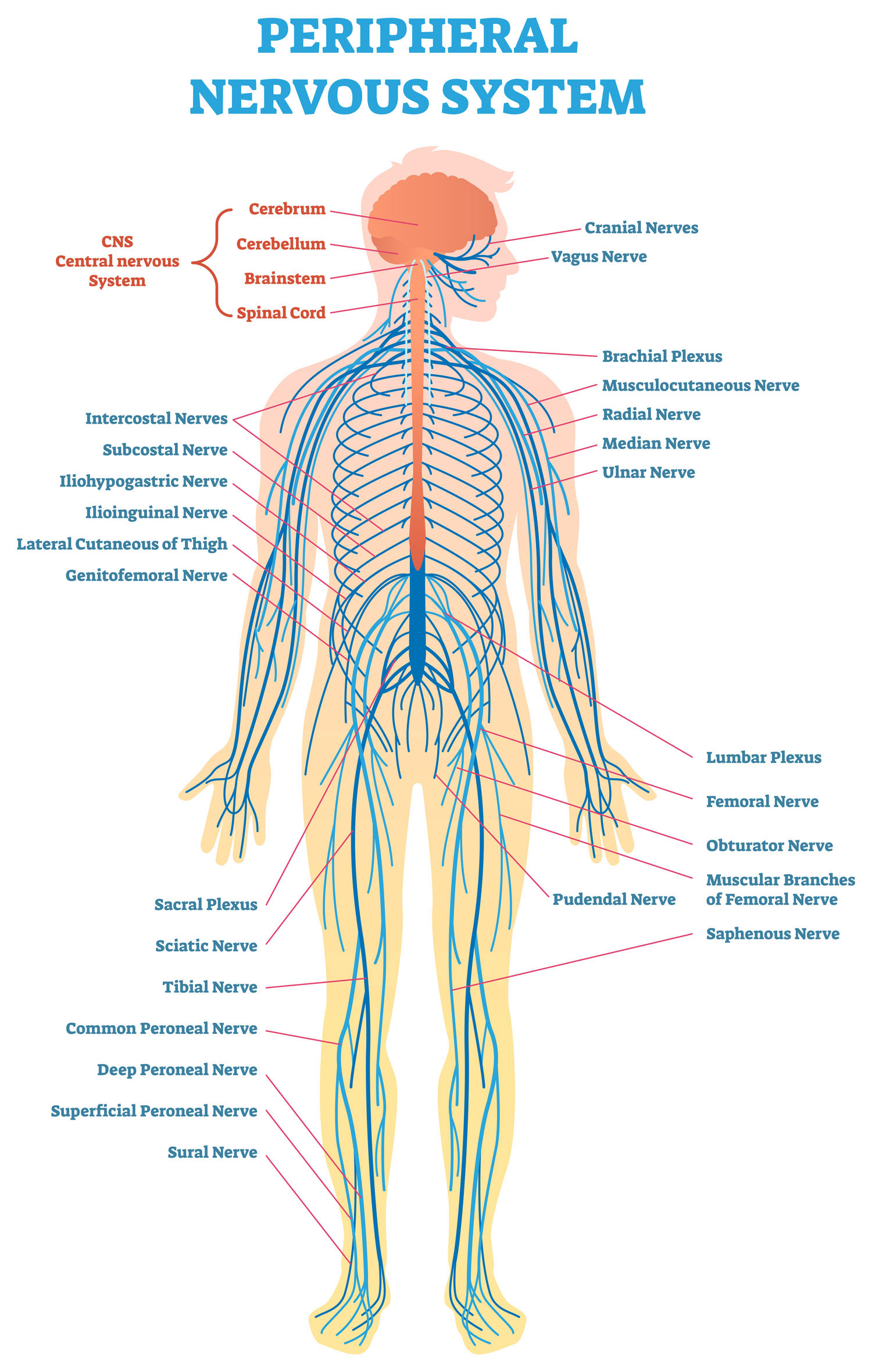What is CMT?
Charcot-Marie-Tooth (CMT) is a progressive nerve disease named after the three doctors who discovered it in 1886:
Jean-Marie Charcot, Pierre Marie and Howard Henry Tooth.


Less common symptoms of CMT include:
- Sleep apnea
- Swallowing problems/choking
- Hearing Loss
- Scoliosis
- Breathing problems (from weakness of respiratory muscles)
Types of CMT
Researchers have identified mutations in more than 100 different genes that cause CMT, but the vast majority of people with CMT (90%) have one of 4 types:

The one thing everyone should know about CMT is that we are all susceptible to it – a random mutation can cause it. CMT can be caused by a de novo (spontaneous) mutation. And sometimes, there is an unrecognizable family history, because the symptoms can be so mild.


1. Cell Body
holds the nucleus which contains the majority of a cell’s DNA.
2. Axon
a tube-like structure which is a continuation of the cell body and carries electrical signals to other cells.
3. Myelin Sheath
forms a coating (sheath) around the axon, which makes the electrical signal travel faster.
What part of the body does CMT affect?
CMT affects the Peripheral Nervous System. It is a progressive nerve disease. Nerves weaken over time, causing progressive disability starting in the toes and fingers and working toward the center of the body.
Peripheral Nerves
- The brain and the spinal cord form the central nervous system (CNS).
- Peripheral nerves branch out of the spinal cord out to our fingertips and toes.
- They affect sensation, muscle strength, balance and involuntary functions like sweating.
- They do this by carrying messages (electrical signals between the CNS to the rest of our body).
To find out more information on how CMT affects the human body please tap here



